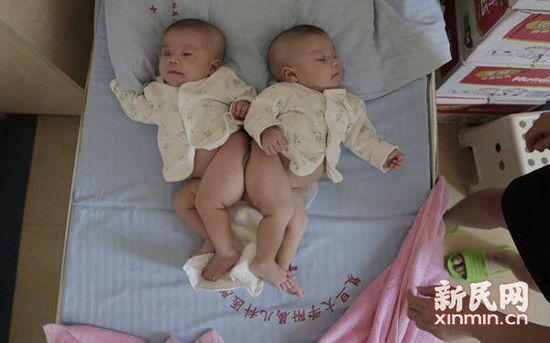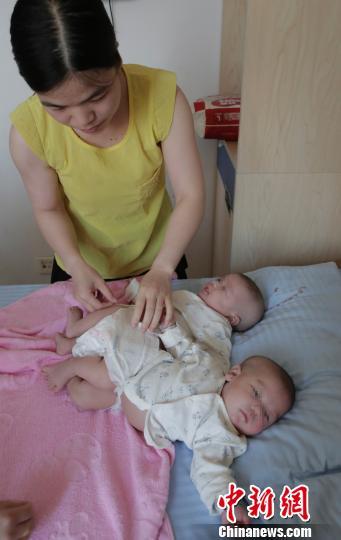 3D printing has been used to change the lives of many people over the past several years. Whether it is for lending a hand in the rapid prototyping of products, creating prosthetic hands for children with upper arm differences, or allowing surgeons to perform high risk surgeries with much more ease than ever before, the technology is certainly providing ample benefit to society.
3D printing has been used to change the lives of many people over the past several years. Whether it is for lending a hand in the rapid prototyping of products, creating prosthetic hands for children with upper arm differences, or allowing surgeons to perform high risk surgeries with much more ease than ever before, the technology is certainly providing ample benefit to society.
Back in February, we reported on a complex surgery that was undertaken in Texas to separate conjoined twins. To complete the surgery, a detailed medical model was created to aid surgeons in the delicate operation. Now doctors in China are doing the same.
 Tomorrow (June 9), will be a huge day for one family in China, as their beautiful newborn conjoined twin girls will be separated from each other for the first time in their lives. Born on March 17 in Nanjing County of South Fujian, China, the twins were found to be conjoined at the buttocks area. In fact, they share part of the same digestive tract and portions of their anus. Like most surgeries which involve the separation of conjoined twins, it is an extremely risky and difficult operation.
Tomorrow (June 9), will be a huge day for one family in China, as their beautiful newborn conjoined twin girls will be separated from each other for the first time in their lives. Born on March 17 in Nanjing County of South Fujian, China, the twins were found to be conjoined at the buttocks area. In fact, they share part of the same digestive tract and portions of their anus. Like most surgeries which involve the separation of conjoined twins, it is an extremely risky and difficult operation.
The girls have been transferred to the Children’s Hospital of Fudan University, where the surgery will take place tomorrow. Surgeons opted to wait until the girls were 3 months old and weighed approximately 10kg in order to perform the risky surgery. In studies, this has been shown to be the best time to perform such an invasive procedure, as babies tend to be strong enough at this point, and their bodies are ready to heal on their own.
These twins are in good hands though, as in the past 15 years, the Children’s Hospital of Fudan University has successfully separated 7 sets of conjoined twins. On top of this, using CT scan data, the surgeons were able to create an accurate 3D printed replica of the twins which doctors were able to simulate surgery on. They have used this 3D printed model to perform a mock operation, and in the process were able to revise their “real” surgical plan to make it more efficient and safe. While it is the very first time that 3D printing was used in order to aid in the separation of twins at this hospital, the hospital has used 3D printing in the past for other surgeries.
The surgery will include the separation of the twins, as well as reconstruction of their perineums and the rectums. Currently the twins share a little less than 1cm of the same anus. It will certainly be a difficult surgery, but with the help of 3D printing, the surgical team feels very confident.
As far as the cost of the surgery, it is very expensive, but the family got a helping hand from the “Angel Mother” charity, in the amount of 200,000 yuan (approximately $32,231).
Best of luck to these beautiful twin girls as they undergo quite an extensive surgery tomorrow. What do you think about the use of 3D printing in creating medical models for complicated surgeries like this? Discuss in the Conjoined Twins forum thread on 3DPB.com.
Subscribe to Our Email Newsletter
Stay up-to-date on all the latest news from the 3D printing industry and receive information and offers from third party vendors.
Print Services
Upload your 3D Models and get them printed quickly and efficiently.
You May Also Like
Consolidation in AM: How 2025 Is Shaping the Industry’s New Normal
The first half of 2025 has been marked by a clear shift in the additive manufacturing (AM) industry. Companies are no longer just focused on developing new tech by themselves....
Etsy Design Rule Change Reduces Selection of 3D Printed Goods
Online marketplace Etsy has implemented a rule change requiring all 3D printed goods on the site to be original designs. The update to the site’s Creativity Standards states, ¨Items produced using...
U.S. Congress Calls Out 3D Printing in Proposal for Commercial Reserve Manufacturing Network
Last week, the U.S. House of Representatives’ Appropriations Committee moved the FY 2026 defense bill forward to the House floor. Included in the legislation is a $131 million proposal for...
Transforming From Tourist to Native: Duro CEO Michael Corr Explains Why the Company Rebuilt its PLM Software on AI
In these early innings of the AI boom, many market analysts have expressed concern that AI spend has gotten too far ahead of the technology’s proven ability to deliver significant...

































